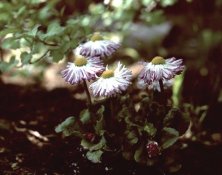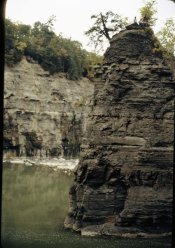Of course, there is always the possibility of tri-color printing. Not complicated in theory, and works best using large format originals, but does require
quite a bit of time to learn how to match black and white separation negatives. A film like TMX100 works quite well. You make three contact separations from your chrome original using deep separation filters, such as 29 red, 58 green, and 47B blue, and make three successive exposures
using these with an appropriate hard filter over your enlarger onto RA4 paper, essentially replicating what an RGB laser exposure system does in the
big labs. I won't go into the details, but might do a few of these myself in the near future and compare them with interneg equivalents.













